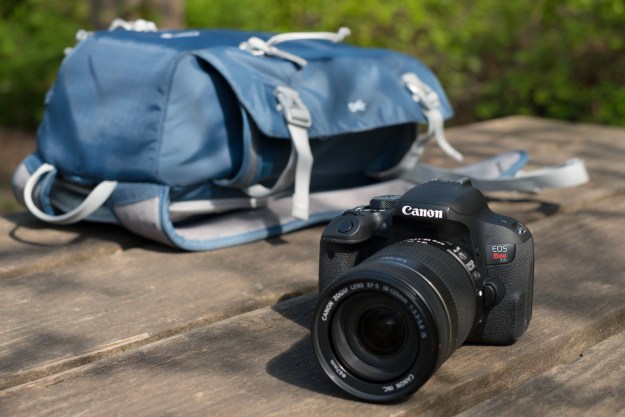Read our full Leica T (Typ 701) review.
Now, before we get started, let’s make one thing clear: yes, we are aware that technically, Leica has always made mirrorless cameras, all the way from the beginning. After all, a rangefinder camera doesn’t sport a reflex mirror like a DSLR. But today, the term mirrorless is mostly used to describe the new breed of digital cameras that can take interchangeable lenses and feature permanent live-view, either via the rear screen or via an electronic viewfinder.
With that said, Leica has just entered the mirrorless market with its new T-system. The T-system is, in many ways, a first for Leica. It’s the company’s first mirrorless system that does not involve a rangefinder, its first interchangeable lens system sporting an APS-C sensor (though Leica already had fixed-lens APS-C cameras with its X-series), and the T Typ 701 camera is Leica’s first to be operated mainly via a large 3.7-inch, 1.3 million dot touchscreen on the rear.
In keeping with its tradition of creating luxurious photographic products that focus solely on taking great pictures, the T Typ 701 has a very sleek and elegant design that was developed in conjunction with German car maker Audi’s design team. Its body is milled out of a solid block of aluminium, which is hand-polished for 45 minutes before it is fitted with all the electronics. Inside, there’s a 16-megapixel APS-C-sized sensor that is allegedly the same as that of the Sony NEX-3N, supporting ISO speeds from 100 up to 12,500.
For starters, the T-system comprises the Typ 701 camera as well as two lenses, a 35mm-equivalent f/2 prime lens and a 27-84mm-equivalent f/3.5-5.6 zoom lens. The camera will not be offered as a kit, instead the body and the lenses all have to be purchased separately. If the two lenses don’t cut it, Leica also offers an adapter to use its M-mount rangefinder lenses on the T-system, albeit with a crop factor of 1.5x due to the smaller sensor. The adapter comes with electronic contacts so that the lens information can be included in the EXIF data.
For those who prefer to use a proper viewfinder instead of the rear screen to compose their pictures, Leica also offers a new electronic viewfinder aptly labelled the “Visoflex,” just like the company’s historic SLR-like viewfinder add-on for its M-series rangefinder cameras. The Visoflex for the T-system is an entirely new development and different from the one used for the X-system and M-system cameras (which is basically a re-labelled Olympus VF-2 viewfinder.) Sporting a resolution of 2.36-million dots, the Visoflex viewfinder also incorporates a GPS module. A Wi-Fi module that allows the T Typ 701 to be remote controlled via a dedicated smartphone app is integrated into the camera’s main body.
Besides the optional viewfinder, the T-system comes with a whole series of accessories such as a flash, colorful protective covers (you wouldn’t want to scratch that beautiful aluminum finish, would you?), matching camera straps, a hand strap, a leather case, a shoulder-mounted holster, a leather camera bag, and more. The Leica T Typ 701 camera, as well as the Summicron-T 23mm f/2 and Vario-Elmar-T 18-56mm f/3.5-5.6 lenses, is available for pre-order now and will start shipping in May. Retail prices are $1,850 for the body (in either black or silver finish), $1,950 for the 23mm lens, and $ 1,750 for the zoom lens.
Editors' Recommendations
- 5 reasons I love the Leica M11 camera and 5 reasons I don’t
- Sony A6100 vs. Fujfilm X-T200: Best beginner mirrorless cameras compared
- The Fujifilm X-T4 looks flawless. Is it the perfect camera?
- Fujifilm X-T3 vs. Sony A6600: Flagship APS-C mirrorless cameras compared
- The little but fierce Nikon Z 50 is a sub-$1,000 mirrorless destined for travel


